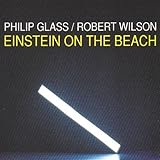HAYDN THE HEAVEN-SENT This is a major anniversary year — for Haydn, Mendelssohn, Lincoln, etc. All are being properly feted, none more lavishly or more deservedly, than Joseph Haydn (born 1809). On my desk sits one of many Haydn celebrations, excellent and lovable: a box containing, 21 Haydn symphonies on 7 CDs. They bear numbers between 41 and 90 and thus represent a “middle” period, just before that final radiance, the dozen-and-more masterworks from the London years that start with the “Oxford” Symphony (No. 92) and end with the amazing “London” Symphony (104), whose harmonic adventures had portended a new musical language. The performances are led by Bruno Weil, whom you should also know for his leadership of the Carmel Bach Festival. His band is the Toronto-based Tafelmusik, whose crisp, elegant sounds make for some of the most seductive noises on any disc anywhere. I love their vision of the “classical” sound,” crisp. freshly laundered, every color highlighted to evoke your long-held fantasy of the 18th=- century sound ideal.
What treasures! Here is a supremely talented composer at the height of his mastery, well-fed at the Esterhà zy table, granted free access to a resident band of the best performers money could buy, empowered to employ that virtuoso band in the invention of new kinds of symphonies, to dream up new structural techniques and sonorities to gain the ear and encouragement of a with-it audience, the kind of crowd we might meet today at, say, the Green Umbrella concerts.. In residence at the Esterházy Palace, or on loan to the assembled connoisseurs at Paris’s Olympic Lodge or at the grand galas bankrolled by the London impresario J. P. Salomon, Haydn flung his marvelously inventive symphonies at an adoring public, with the assurance – seldom granted to any creative artist – that his most daring flights of fancy would be accepted, even admired.
I love the mix, of humor and suspense, of the meticulous classical melody and the rudeness of the country dance. Take, to cite one of many instances) a C-major symphony numbered 90 (in the usual if shakily assembled chronological listing), with its finale a virtual compendium of orchestral tricks. At one point Haydn has his players come to a sudden and prolonged silence in mid-phrase; a few bars later they resume, but in the “wrong” key, D-flat instead of the expected C.—a small distance on the keyboard but a jolt to the flesh!
Listening to Haydn symphonies – in the live performances that Esa-Pekka Salonen gave us here,whimsical and loving, or in the ASIN: B00008PXA3 grandeur of George Szell’s magisterial readings of the London series, – becomes a special and cherishable experience The progression of themes, dramatic yet inevitable as idea begets idea; the play of memory as themes vanish, metamorphose and then stage glorious returns; the notion of symphony as grand design and as battlefield: Haydn’s glory lies in his appeal to our powers of memory and our willingness and our appetite for surprise. His music stands as a grand monument to process, the triumphant kind of process both clear and quirky; where you always know what’s happening…
…Or think you do, at any rate. I cling to my memories of a Haydn Symphony course at Harvard, some time around 1942. G. Wallace Woodworth was the spellbinding prof; he also conducted the Glee Club, and “glee” was definitely his word. One thing he most dearly in Haydn was thats gift for surprise. “Woody” – we addressed him in no other way — would start a movement on the phonograph, and a certain point he’d pick up the tone-arm (remember tone-arms?) and, with a smile roughly the breadth of Boston Harbor, would ask the class to stage a kind of forum on what we thought was going to happen next. Then he’d drop the needle, and nine times out of ten we had all guessed wrong. The guys would look shame-faced; the girls would giggle, and Woody and Haydn would have made their point. Sixty years later the memory of Woody’s smile still lights up my Haydn experiences..
Memorable moments abide. I love the way the Symphony 88, familiar from an old Toscanini recording (humorless and harsh of tone) sends a solo flute in delightful skittering counterpoint across some of its tunes, and encourages the kettledrums to make themselves known where least expected, its humor delightfully seconded by Weil and his superb small orchestra. In the Symphony No. 86, which Bruno Walter once recorded eloquently, a slow movement titled “Capriccio” honors its title with unexpected, passionate outcries. The 46th Symphony is in the little-used key of B major – five sharps in the key signature! We know that Haydn’s music in keys with complex key-signatures always affects a particular richness in its harmonies, a leaning toward passion and complexity, and this is the case here — as it is also is in the F-sharp Minor “Farewell” Symphony, one of the few works in this remarkable collection that you may have heard before.
A veritable box of trickery, this Haydn trove of 21 separate and distinctive symphonic adventures. Six of them are the symphonies Haydn wrote for the Paris Olympic Lodge. They are titled and incorporate a certain amount of pictorial cuteness – “The Bear ,” “The Hen,” which might tell us something about the tastes of Parisian sophisticates on the eve of their country’s revolution. Another group of works, symphonies of have earned the collective title of the “Sturm und Drang” Symphonies a reflection of taste in the time of Schiller and Goethe
His musical trickery is are by turns startling and amusing, but these are only flecks on a surface. Far more important, to these ears anyhow, is the over-all impression you get from these lovely essays, or any gathering of half-hours in Haydn’s blithe company, that here was a composer wise and daring, supremely fortunate (as few in his profession have been) with employment conditions that included his total freedom to experiment with the boundaries of accepted musical structure and style, and to push them back as far as his artistic conscience allowed. Not merely the “Father of the Symphony” of the music-appreciation racketeers (to evoke Virgil Thomson’s precious analogy) he was more the unruly big brother, the family black sheep. Beyond this, it also seems to me that the music room at MEsterház could easily have qualified as as The Green Umbrella of its day.
MANY ROOMS: Actually, the spirit of newness and the joy of exploration filled many rooms these past few weeks. Two of our most imaginative, best-planned, courageous and stimulating concert series – PianoSpheres at Zipper Hall and Jacaranda at Santa Monica’s First Pres — sprang into action in adjacent weeks, both greeted with enthusiasm and delight by properly capacity crowds, Gloria Cheng, B0019QEY4W
our precious piano pioneer, drew a fine, full house at Zipper, even against the competition of a Murray Perahia recital at Disney across the street. Her concert, the season’s first PianoSpheres enterprise, offered an enticing, imaginative mishmash — handsomely delivered in the blend of eager artistry and flawless technique that are Gloria’s glory: a mist-shrouded piano+tape relic by Luigi Nono, an equally enchanting, fogbound essay by Tom Adès, Alfred Schnittke’s sozzled, gesturesome Piano Quintet (with the excellent Calder Quartet in collaboration), Andrew Waggoner’s sleep-inducing modern take on the ancient dance “La Folie” and, best of all to my taste, John Harbison’s set of “Anagrams” on the name of the PianoSpheres founding saint, Leonard Stein. Shorter in length and perhaps more reticent than anything else on this varied, imaginative program, the Harbison was the work that people seemed most eager to praise, out on the sidewalk after the concert. And with good reason.
JACARANDA BLOSSOMS: In Santa Monica the season began for this most admirable chamber-music series, and I cannot remember (or even want to remember) a better-imagined, better-played program supercharged ßwith the pleasure of discovery that you could somehow feel and share on either side of the stage.
Ben Johnston’s Fourth Quartet has been co-opted by Jacaranda’s Denali Quartet; its brash and aggressive harmonies seem to generate hordes of new friends with every playing. (I heard it first at a private concert, with the 85-year composer in pleased attendance, some months ago. The work is a set of free variations on the old Slavey hymn-tune “Amazing Grace”; and Johnston, music’s great renegade, has made free use of the harmonies of old-time organs and fiddles, as if to return to its own nativity. The Denali has made it their own – progressively so; this was my fourth hearing. The partnership of Jacaranda’s programming genius and the young energy of its performing forces has created an inimitable standard in local music-making.
“Programming genius?” Saturday’s concert began with Morty Feldman’s Rothko Chapel,SC10622 his evocation of that haunting Texas artwork for small chorus, drums and an ecstatic solo viola, the work of Feldman’s most easy to describe as “beautiful.”. Then came Ben Johnston’s Fourth Quartet, its radiance intensified by the handsome small church that Jacaranda calls ome. Then – wonder of wonders!!—there came music from that legendary masterwork we all long to have in our midst, Einstein on the Beach: not with Bob Wilson’s magical, madcap sets and staging, but at least with half-an-hour of Philip Glass’s music, B000005J28 enough to intensify our craving for the entire work on a local stage sometime in our lifetime.
These were Einstein’s “Knee-Plays,” the interlude pieces that served as flexible joints between episodes. A chorus intoned quick sequences of numbers, which in the original could be seen dancing on a back screen. A solo voice (KUSC’s Gail Eichenthal) intoned the near-jabberwock of an autistic child (the young Christopher Knowles back then, whom Wilson had adopted and groomed into an artistic career). A violinist (Joel Pargman) delivers roulades and cadenzas, symbolic of Einstein’s violinistic skills. If you have evolved a supicion that this doesn’t make sense, you just haven’t discovered the magnificent rationale of Einstein on the Beach.
Even unstaged, undanced and unorchestrated, this Einstein teaser — led by Grant Gershon and with the L.A. Children’s Chorus and with Sandra Tsing Loh and Ken Page also among the narrators – makes a convincing case for the whole kaboodle, and sometime soon. So, in fact did this entire superlative concert venture.
 HAYDN THE HEAVEN-SENT This is a major anniversary year — for Haydn, Mendelssohn, Lincoln, etc. All are being properly feted, none more lavishly or more deservedly, than Joseph Haydn (born 1809). On my desk sits one of many Haydn celebrations, excellent and lovable: a box containing, 21 Haydn symphonies on 7 CDs. They bear numbers between 41 and 90 and thus represent a “middle” period, just before that final radiance, the dozen-and-more masterworks from the London years that start with the “Oxford” Symphony (No. 92) and end with the amazing “London” Symphony (104), whose harmonic adventures had portended a new musical language. The performances are led by Bruno Weil, whom you should also know for his leadership of the Carmel Bach Festival. His band is the Toronto-based Tafelmusik, whose crisp, elegant sounds make for some of the most seductive noises on any disc anywhere. I love their vision of the “classical” sound,” crisp. freshly laundered, every color highlighted to evoke your long-held fantasy of the 18th=- century sound ideal.
HAYDN THE HEAVEN-SENT This is a major anniversary year — for Haydn, Mendelssohn, Lincoln, etc. All are being properly feted, none more lavishly or more deservedly, than Joseph Haydn (born 1809). On my desk sits one of many Haydn celebrations, excellent and lovable: a box containing, 21 Haydn symphonies on 7 CDs. They bear numbers between 41 and 90 and thus represent a “middle” period, just before that final radiance, the dozen-and-more masterworks from the London years that start with the “Oxford” Symphony (No. 92) and end with the amazing “London” Symphony (104), whose harmonic adventures had portended a new musical language. The performances are led by Bruno Weil, whom you should also know for his leadership of the Carmel Bach Festival. His band is the Toronto-based Tafelmusik, whose crisp, elegant sounds make for some of the most seductive noises on any disc anywhere. I love their vision of the “classical” sound,” crisp. freshly laundered, every color highlighted to evoke your long-held fantasy of the 18th=- century sound ideal.
What treasures! Here is a supremely talented composer at the height of his mastery, well-fed at the Esterhà zy table, granted free access to a resident band of the best performers money could buy, empowered to employ that virtuoso band in the invention of new kinds of symphonies, to dream up new structural techniques and sonorities to gain the ear and encouragement of a with-it audience, the kind of crowd we might meet today at, say, the Green Umbrella concerts.. In residence at the Esterházy Palace, or on loan to the assembled connoisseurs at Paris’s Olympic Lodge or at the grand galas bankrolled by the London impresario J. P. Salomon, Haydn flung his marvelously inventive symphonies at an adoring public, with the assurance – seldom granted to any creative artist – that his most daring flights of fancy would be accepted, even admired.
I love the mix, of humor and suspense, of the meticulous classical melody and the rudeness of the country dance. Take, to cite one of many instances) a C-major symphony numbered 90 (in the usual if shakily assembled chronological listing), with its finale a virtual compendium of orchestral tricks. At one point Haydn has his players come to a sudden and prolonged silence in mid-phrase; a few bars later they resume, but in the “wrong” key, D-flat instead of the expected C.—a small distance on the keyboard but a jolt to the flesh!
 Listening to Haydn symphonies – in the live performances that Esa-Pekka Salonen gave us here,whimsical and loving, or in the grandeur of George Szell’s magisterial readings of the London series, – becomes a special and cherishable experience The progression of themes, dramatic yet inevitable as idea begets idea; the play of memory as themes vanish, metamorphose and then stage glorious returns; the notion of symphony as grand design and as battlefield: Haydn’s glory lies in his appeal to our powers of memory and our willingness and our appetite for surprise. His music stands as a grand monument to process, the triumphant kind of process both clear and quirky; where you always know what’s happening…
Listening to Haydn symphonies – in the live performances that Esa-Pekka Salonen gave us here,whimsical and loving, or in the grandeur of George Szell’s magisterial readings of the London series, – becomes a special and cherishable experience The progression of themes, dramatic yet inevitable as idea begets idea; the play of memory as themes vanish, metamorphose and then stage glorious returns; the notion of symphony as grand design and as battlefield: Haydn’s glory lies in his appeal to our powers of memory and our willingness and our appetite for surprise. His music stands as a grand monument to process, the triumphant kind of process both clear and quirky; where you always know what’s happening…
…Or think you do, at any rate. I cling to my memories of a Haydn Symphony course at Harvard, some time around 1942. G. Wallace Woodworth was the spellbinding prof; he also conducted the Glee Club, and “glee” was definitely his word. One thing he most dearly in Haydn was thats gift for surprise. “Woody” – we addressed him in no other way — would start a movement on the phonograph, and a certain point he’d pick up the tone-arm (remember tone-arms?) and, with a smile roughly the breadth of Boston Harbor, would ask the class to stage a kind of forum on what we thought was going to happen next. Then he’d drop the needle, and nine times out of ten we had all guessed wrong. The guys would look shame-faced; the girls would giggle, and Woody and Haydn would have made their point. Sixty years later the memory of Woody’s smile still lights up my Haydn experiences..
Memorable moments abide. I love the way the Symphony 88, familiar from an old Toscanini recording (humorless and harsh of tone) sends a solo flute in delightful skittering counterpoint across some of its tunes, and encourages the kettledrums to make themselves known where least expected, its humor delightfully seconded by Weil and his superb small orchestra. In the Symphony No. 86, which Bruno Walter once recorded eloquently, a slow movement titled “Capriccio” honors its title with unexpected, passionate outcries. The 46th Symphony is in the little-used key of B major – five sharps in the key signature! We know that Haydn’s music in keys with complex key-signatures always affects a particular richness in its harmonies, a leaning toward passion and complexity, and this is the case here — as it is also is in the F-sharp Minor “Farewell” Symphony, one of the few works in this remarkable collection that you may have heard before.
A veritable box of trickery, this Haydn trove of 21 separate and distinctive symphonic adventures. Six of them are the symphonies Haydn wrote for the Paris Olympic Lodge. They are titled and incorporate a certain amount of pictorial cuteness – “The Bear ,” “The Hen,” which might tell us something about the tastes of Parisian sophisticates on the eve of their country’s revolution. Another group of works, symphonies of have earned the collective title of the “Sturm und Drang” Symphonies a reflection of taste in the time of Schiller and Goethe
His musical trickery is are by turns startling and amusing, but these are only flecks on a surface. Far more important, to these ears anyhow, is the over-all impression you get from these lovely essays, or any gathering of half-hours in Haydn’s blithe company, that here was a composer wise and daring, supremely fortunate (as few in his profession have been) with employment conditions that included his total freedom to experiment with the boundaries of accepted musical structure and style, and to push them back as far as his artistic conscience allowed. Not merely the “Father of the Symphony” of the music-appreciation racketeers (to evoke Virgil Thomson’s precious analogy) he was more the unruly big brother, the family black sheep. Beyond this, it also seems to me that the music room at Mesterház could easily have qualified as as The Green Umbrella of its day.
 MANY ROOMS: Actually, the spirit of newness and the joy of exploration filled many rooms these past few weeks. Two of our most imaginative, best-planned, courageous and stimulating concert series – PianoSpheres at Zipper Hall and Jacaranda at Santa Monica’s First Pres — sprang into action in adjacent weeks, both greeted with enthusiasm and delight by properly capacity crowds, Gloria Cheng, our precious piano pioneer, drew a fine, full house at Zipper, even against the competition of a Murray Perahia recital at Disney across the street. Her concert, the season’s first PianoSpheres enterprise, offered an enticing, imaginative mishmash — handsomely delivered in the blend of eager artistry and flawless technique that are Gloria’s glory: a mist-shrouded piano+tape relic by Luigi Nono, an equally enchanting, fogbound essay by Tom Adès, Alfred Schnittke’s sozzled, gesturesome Piano Quintet (with the excellent Calder Quartet in collaboration), Andrew Waggoner’s sleep-inducing modern take on the ancient dance “La Folie” and, best of all to my taste, John Harbison’s set of “Anagrams” on the name of the PianoSpheres founding saint, Leonard Stein. Shorter in length and perhaps more reticent than anything else on this varied, imaginative program, the Harbison was the work that people seemed most eager to praise, out on the sidewalk after the concert. And with good reason.
MANY ROOMS: Actually, the spirit of newness and the joy of exploration filled many rooms these past few weeks. Two of our most imaginative, best-planned, courageous and stimulating concert series – PianoSpheres at Zipper Hall and Jacaranda at Santa Monica’s First Pres — sprang into action in adjacent weeks, both greeted with enthusiasm and delight by properly capacity crowds, Gloria Cheng, our precious piano pioneer, drew a fine, full house at Zipper, even against the competition of a Murray Perahia recital at Disney across the street. Her concert, the season’s first PianoSpheres enterprise, offered an enticing, imaginative mishmash — handsomely delivered in the blend of eager artistry and flawless technique that are Gloria’s glory: a mist-shrouded piano+tape relic by Luigi Nono, an equally enchanting, fogbound essay by Tom Adès, Alfred Schnittke’s sozzled, gesturesome Piano Quintet (with the excellent Calder Quartet in collaboration), Andrew Waggoner’s sleep-inducing modern take on the ancient dance “La Folie” and, best of all to my taste, John Harbison’s set of “Anagrams” on the name of the PianoSpheres founding saint, Leonard Stein. Shorter in length and perhaps more reticent than anything else on this varied, imaginative program, the Harbison was the work that people seemed most eager to praise, out on the sidewalk after the concert. And with good reason.
JACARANDA BLOSSOMS: In Santa Monica the season began for this most admirable chamber-music series, and I cannot remember (or even want to remember) a better-imagined, better-played program supercharged with the pleasure of discovery that you could somehow feel and share on either side of the stage.
 Ben Johnston’s Fourth Quartet has been co-opted by Jacaranda’s Denali Quartet; its brash and aggressive harmonies seem to generate hordes of new friends with every playing. (I heard it first at a private concert, with the 85-year composer in pleased attendance, some months ago. The work is a set of free variations on the old Slavey hymn-tune “Amazing Grace”; and Johnston, music’s great renegade, has made free use of the harmonies of old-time organs and fiddles, as if to return to its own nativity. The Denali has made it their own – progressively so; this was my fourth hearing. The partnership of Jacaranda’s programming genius and the young energy of its performing forces has created an inimitable standard in local music-making.
Ben Johnston’s Fourth Quartet has been co-opted by Jacaranda’s Denali Quartet; its brash and aggressive harmonies seem to generate hordes of new friends with every playing. (I heard it first at a private concert, with the 85-year composer in pleased attendance, some months ago. The work is a set of free variations on the old Slavey hymn-tune “Amazing Grace”; and Johnston, music’s great renegade, has made free use of the harmonies of old-time organs and fiddles, as if to return to its own nativity. The Denali has made it their own – progressively so; this was my fourth hearing. The partnership of Jacaranda’s programming genius and the young energy of its performing forces has created an inimitable standard in local music-making.
 “Programming genius?” Saturday’s concert began with Morty Feldman’s Rothko Chapel,his evocation of that haunting Texas artwork for small chorus, drums and an ecstatic solo viola, the work of Feldman’s most easy to describe as “beautiful.”. Then came Ben Johnston’s Fourth Quartet, its radiance intensified by the handsome small church that Jacaranda calls ome. Then – wonder of wonders!!—there came music from that legendary masterwork we all long to have in our midst, Einstein on the Beach: not with Bob Wilson’s magical, madcap sets and staging, but at least with half-an-hour of Philip Glass’s music, enough to intensify our craving for the entire work on a local stage sometime in our lifetime.
“Programming genius?” Saturday’s concert began with Morty Feldman’s Rothko Chapel,his evocation of that haunting Texas artwork for small chorus, drums and an ecstatic solo viola, the work of Feldman’s most easy to describe as “beautiful.”. Then came Ben Johnston’s Fourth Quartet, its radiance intensified by the handsome small church that Jacaranda calls ome. Then – wonder of wonders!!—there came music from that legendary masterwork we all long to have in our midst, Einstein on the Beach: not with Bob Wilson’s magical, madcap sets and staging, but at least with half-an-hour of Philip Glass’s music, enough to intensify our craving for the entire work on a local stage sometime in our lifetime.

These were Einstein’s “Knee-Plays,” the interlude pieces that served as flexible joints between episodes. A chorus intoned quick sequences of numbers, which in the original could be seen dancing on a back screen. A solo voice (KUSC’s Gail Eichenthal) intoned the near-jabberwock of an autistic child (the young Christopher Knowles back then, whom Wilson had adopted and groomed into an artistic career). A violinist (Joel Pargman) delivers roulades and cadenzas, symbolic of Einstein’s violinistic skills. If you have evolved a supicion that this doesn’t make sense, you just haven’t discovered the magnificent rationale of Einstein on the Beach.
Even unstaged, undanced and unorchestrated, this Einstein teaser — led by Mark Alan Hilt and with the L.A. Children’s Chorus and with Sandra Tsing Loh and Ken Page also among the narrators – makes a convincing case for the whole kaboodle, and sometime soon. So, in fact did this entire superlative concert venture.
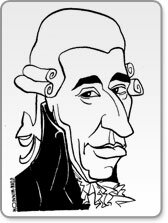 HAYDN THE HEAVEN-SENT This is a major anniversary year — for Haydn, Mendelssohn, Lincoln, etc. All are being properly feted, none more lavishly or more deservedly, than Joseph Haydn (born 1809). On my desk sits one of many Haydn celebrations, excellent and lovable: a box containing, 21 Haydn symphonies on 7 CDs. They bear numbers between 41 and 90 and thus represent a “middle” period, just before that final radiance, the dozen-and-more masterworks from the London years that start with the “Oxford” Symphony (No. 92) and end with the amazing “London” Symphony (104), whose harmonic adventures had portended a new musical language. The performances are led by Bruno Weil, whom you should also know for his leadership of the Carmel Bach Festival. His band is the Toronto-based Tafelmusik, whose crisp, elegant sounds make for some of the most seductive noises on any disc anywhere. I love their vision of the “classical” sound,” crisp. freshly laundered, every color highlighted to evoke your long-held fantasy of the 18th=- century sound ideal.
HAYDN THE HEAVEN-SENT This is a major anniversary year — for Haydn, Mendelssohn, Lincoln, etc. All are being properly feted, none more lavishly or more deservedly, than Joseph Haydn (born 1809). On my desk sits one of many Haydn celebrations, excellent and lovable: a box containing, 21 Haydn symphonies on 7 CDs. They bear numbers between 41 and 90 and thus represent a “middle” period, just before that final radiance, the dozen-and-more masterworks from the London years that start with the “Oxford” Symphony (No. 92) and end with the amazing “London” Symphony (104), whose harmonic adventures had portended a new musical language. The performances are led by Bruno Weil, whom you should also know for his leadership of the Carmel Bach Festival. His band is the Toronto-based Tafelmusik, whose crisp, elegant sounds make for some of the most seductive noises on any disc anywhere. I love their vision of the “classical” sound,” crisp. freshly laundered, every color highlighted to evoke your long-held fantasy of the 18th=- century sound ideal.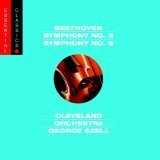 Listening to Haydn symphonies – in the live performances that Esa-Pekka Salonen gave us here,whimsical and loving, or in the grandeur of George Szell’s magisterial readings of the London series, – becomes a special and cherishable experience The progression of themes, dramatic yet inevitable as idea begets idea; the play of memory as themes vanish, metamorphose and then stage glorious returns; the notion of symphony as grand design and as battlefield: Haydn’s glory lies in his appeal to our powers of memory and our willingness and our appetite for surprise. His music stands as a grand monument to process, the triumphant kind of process both clear and quirky; where you always know what’s happening…
Listening to Haydn symphonies – in the live performances that Esa-Pekka Salonen gave us here,whimsical and loving, or in the grandeur of George Szell’s magisterial readings of the London series, – becomes a special and cherishable experience The progression of themes, dramatic yet inevitable as idea begets idea; the play of memory as themes vanish, metamorphose and then stage glorious returns; the notion of symphony as grand design and as battlefield: Haydn’s glory lies in his appeal to our powers of memory and our willingness and our appetite for surprise. His music stands as a grand monument to process, the triumphant kind of process both clear and quirky; where you always know what’s happening…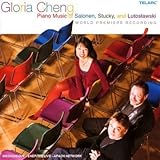 MANY ROOMS: Actually, the spirit of newness and the joy of exploration filled many rooms these past few weeks. Two of our most imaginative, best-planned, courageous and stimulating concert series – PianoSpheres at Zipper Hall and Jacaranda at Santa Monica’s First Pres — sprang into action in adjacent weeks, both greeted with enthusiasm and delight by properly capacity crowds, Gloria Cheng, our precious piano pioneer, drew a fine, full house at Zipper, even against the competition of a Murray Perahia recital at Disney across the street. Her concert, the season’s first PianoSpheres enterprise, offered an enticing, imaginative mishmash — handsomely delivered in the blend of eager artistry and flawless technique that are Gloria’s glory: a mist-shrouded piano+tape relic by Luigi Nono, an equally enchanting, fogbound essay by Tom Adès, Alfred Schnittke’s sozzled, gesturesome Piano Quintet (with the excellent Calder Quartet in collaboration), Andrew Waggoner’s sleep-inducing modern take on the ancient dance “La Folie” and, best of all to my taste, John Harbison’s set of “Anagrams” on the name of the PianoSpheres founding saint, Leonard Stein. Shorter in length and perhaps more reticent than anything else on this varied, imaginative program, the Harbison was the work that people seemed most eager to praise, out on the sidewalk after the concert. And with good reason.
MANY ROOMS: Actually, the spirit of newness and the joy of exploration filled many rooms these past few weeks. Two of our most imaginative, best-planned, courageous and stimulating concert series – PianoSpheres at Zipper Hall and Jacaranda at Santa Monica’s First Pres — sprang into action in adjacent weeks, both greeted with enthusiasm and delight by properly capacity crowds, Gloria Cheng, our precious piano pioneer, drew a fine, full house at Zipper, even against the competition of a Murray Perahia recital at Disney across the street. Her concert, the season’s first PianoSpheres enterprise, offered an enticing, imaginative mishmash — handsomely delivered in the blend of eager artistry and flawless technique that are Gloria’s glory: a mist-shrouded piano+tape relic by Luigi Nono, an equally enchanting, fogbound essay by Tom Adès, Alfred Schnittke’s sozzled, gesturesome Piano Quintet (with the excellent Calder Quartet in collaboration), Andrew Waggoner’s sleep-inducing modern take on the ancient dance “La Folie” and, best of all to my taste, John Harbison’s set of “Anagrams” on the name of the PianoSpheres founding saint, Leonard Stein. Shorter in length and perhaps more reticent than anything else on this varied, imaginative program, the Harbison was the work that people seemed most eager to praise, out on the sidewalk after the concert. And with good reason.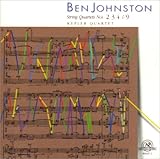 Ben Johnston’s Fourth Quartet has been co-opted by Jacaranda’s Denali Quartet; its brash and aggressive harmonies seem to generate hordes of new friends with every playing. (I heard it first at a private concert, with the 85-year composer in pleased attendance, some months ago. The work is a set of free variations on the old Slavey hymn-tune “Amazing Grace”; and Johnston, music’s great renegade, has made free use of the harmonies of old-time organs and fiddles, as if to return to its own nativity. The Denali has made it their own – progressively so; this was my fourth hearing. The partnership of Jacaranda’s programming genius and the young energy of its performing forces has created an inimitable standard in local music-making.
Ben Johnston’s Fourth Quartet has been co-opted by Jacaranda’s Denali Quartet; its brash and aggressive harmonies seem to generate hordes of new friends with every playing. (I heard it first at a private concert, with the 85-year composer in pleased attendance, some months ago. The work is a set of free variations on the old Slavey hymn-tune “Amazing Grace”; and Johnston, music’s great renegade, has made free use of the harmonies of old-time organs and fiddles, as if to return to its own nativity. The Denali has made it their own – progressively so; this was my fourth hearing. The partnership of Jacaranda’s programming genius and the young energy of its performing forces has created an inimitable standard in local music-making.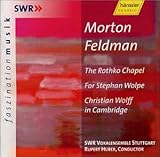 “Programming genius?” Saturday’s concert began with Morty Feldman’s Rothko Chapel,his evocation of that haunting Texas artwork for small chorus, drums and an ecstatic solo viola, the work of Feldman’s most easy to describe as “beautiful.”. Then came Ben Johnston’s Fourth Quartet, its radiance intensified by the handsome small church that Jacaranda calls ome. Then – wonder of wonders!!—there came music from that legendary masterwork we all long to have in our midst, Einstein on the Beach: not with Bob Wilson’s magical, madcap sets and staging, but at least with half-an-hour of Philip Glass’s music, enough to intensify our craving for the entire work on a local stage sometime in our lifetime.
“Programming genius?” Saturday’s concert began with Morty Feldman’s Rothko Chapel,his evocation of that haunting Texas artwork for small chorus, drums and an ecstatic solo viola, the work of Feldman’s most easy to describe as “beautiful.”. Then came Ben Johnston’s Fourth Quartet, its radiance intensified by the handsome small church that Jacaranda calls ome. Then – wonder of wonders!!—there came music from that legendary masterwork we all long to have in our midst, Einstein on the Beach: not with Bob Wilson’s magical, madcap sets and staging, but at least with half-an-hour of Philip Glass’s music, enough to intensify our craving for the entire work on a local stage sometime in our lifetime.